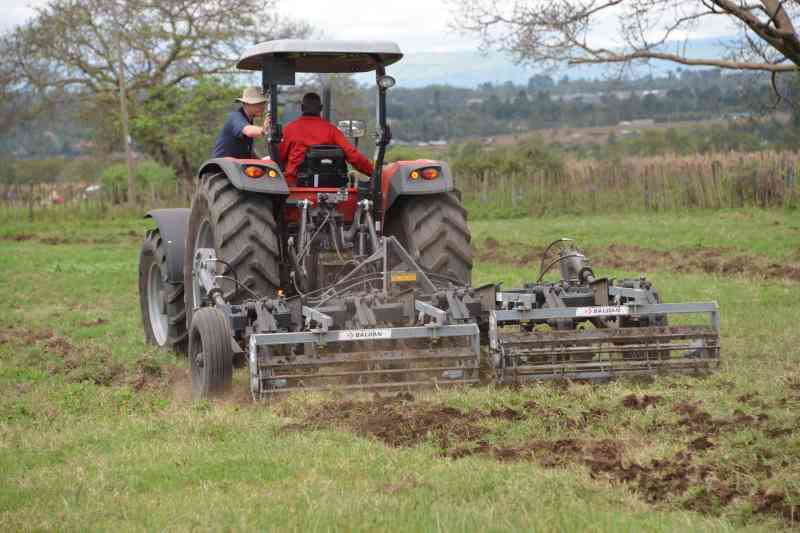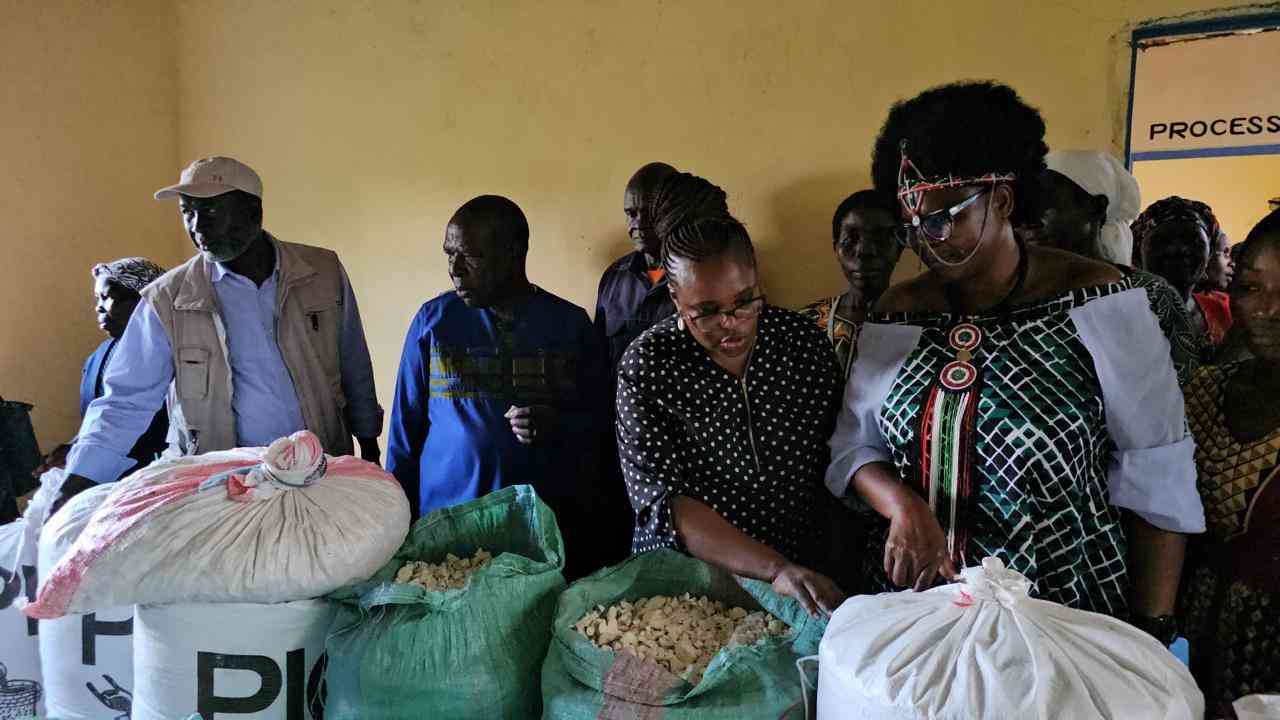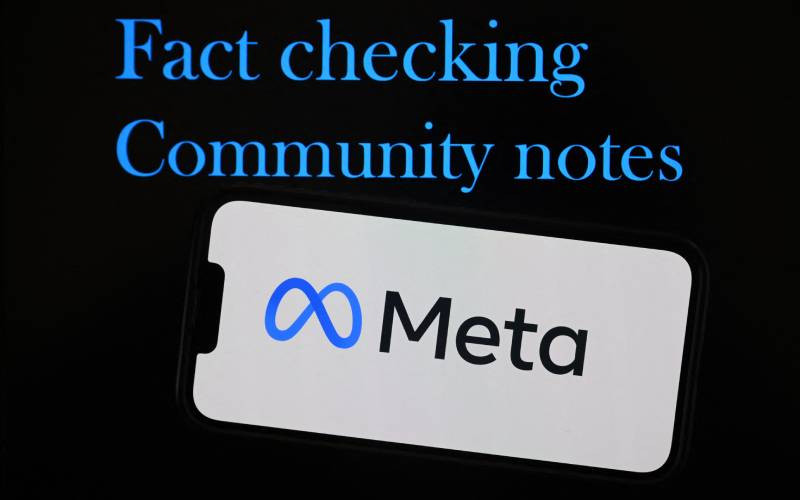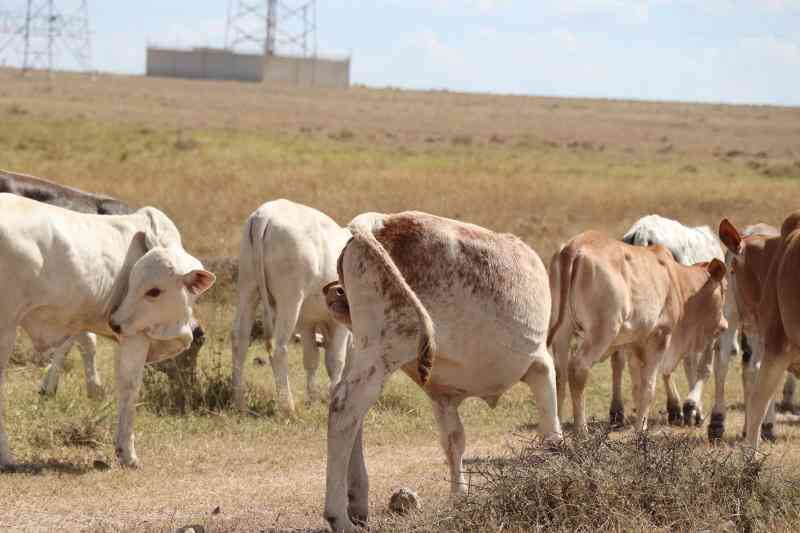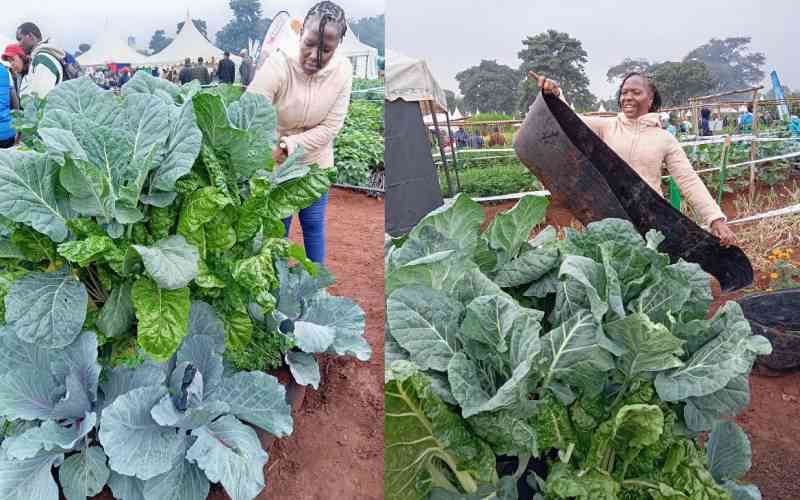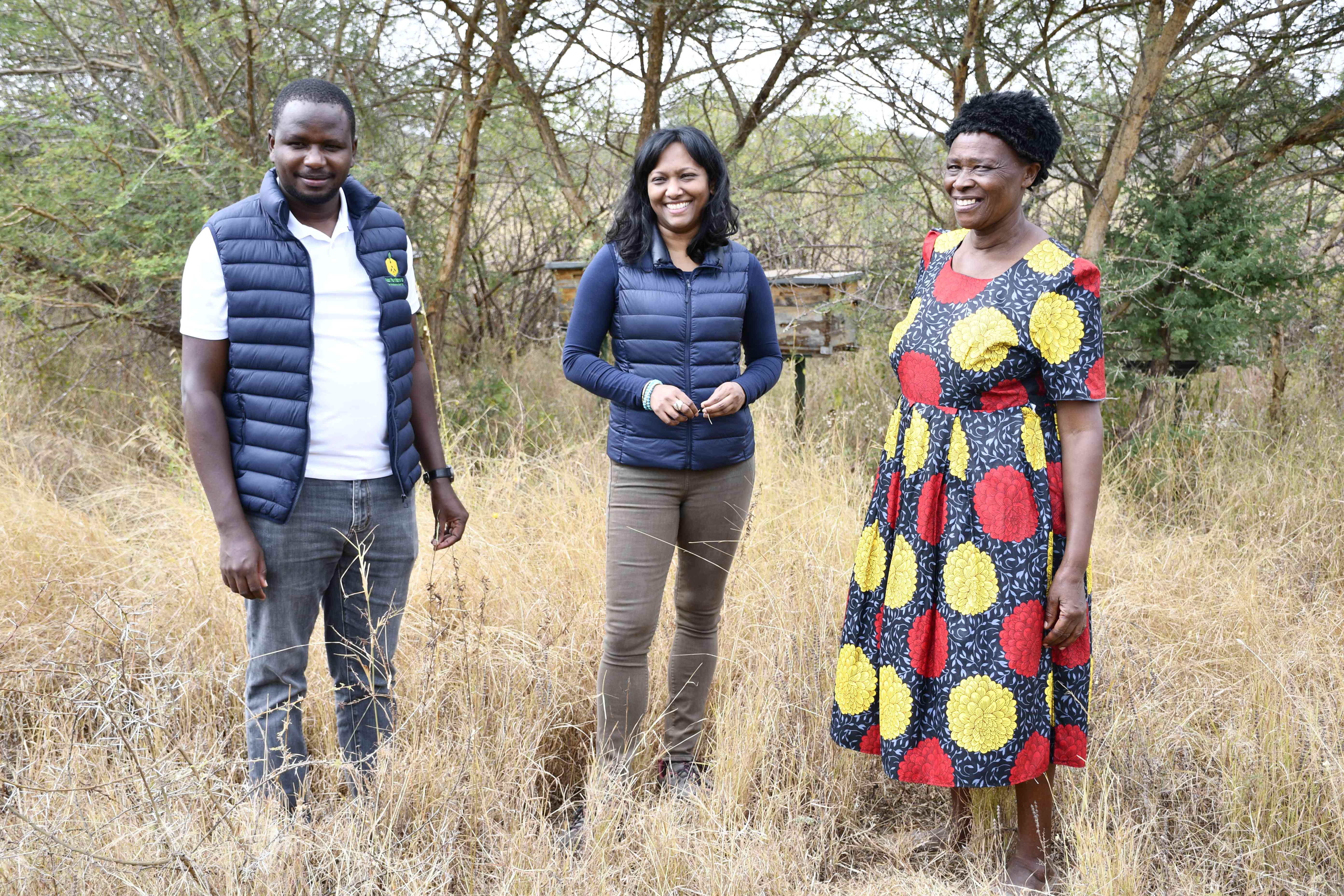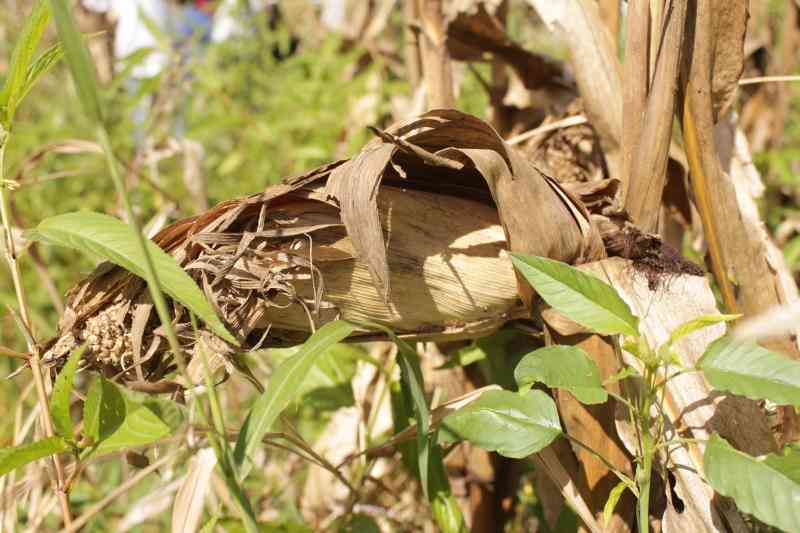
Mercy Munene, the founder and CEO of Shamba connect during an interview with the Standard. [Denis Kibuchi, Standard]
For a long time, Mercy Munene wanted to keep rabbits as pets because they are furry and friendly but decided to keep them for business after doing her research.
Meeting her at her home in Utawala, Mercy has properly utilized her compound, at one end she has built a rabbit cage and at the front, she has planted indigenous vegetables. The vegetables are planted on tires, and containers to utilize space.
The business that she started in 2020 has its perks and challenges.
"It is not a get-rich-quick scheme, also another challenge is capital. It takes a lot of perseverance and investing without seeing the returns for quite some time."
In terms of the workforce, it requires someone who is trained, and ready to go the long haul "It also requires a keen eye, to know which one is pregnant, how are the records kept, just to ensure they are healthy."
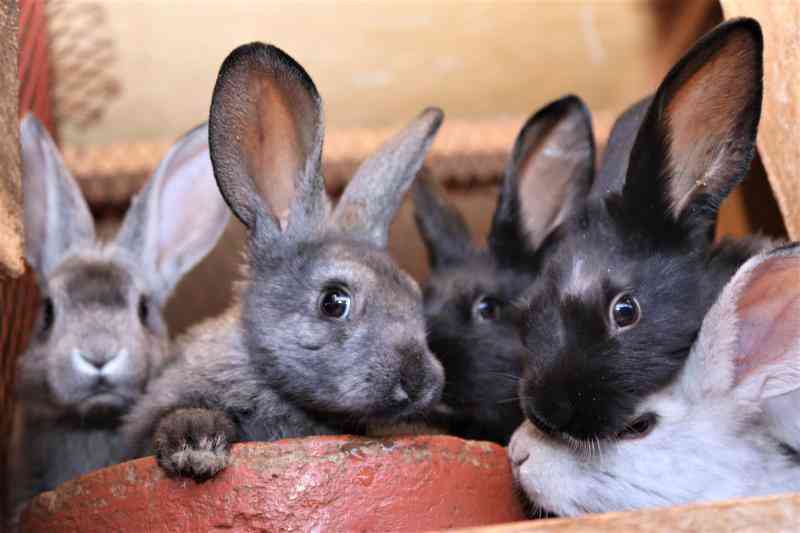
Keenness is also required to avoid inbreeding.
How to avoid inbreeding?
Inbreeding is the mating of individuals or organisms that are closely related through common ancestry, so to avoid these Mercy, monitors them.
"We check on each one of them to make sure they do not inbreed. We keep records so that we can know who is the father and brother of who," she says
Effects of inbreeding
Poor reproductive efficiency, High mortality rates, Lower growth rates, and the Possibility of hereditary abnormalities.
Good and bad rabbit mothers
Still, on keenness, Mercy says that another challenge is determining good and bad mothers.
"There are mothers who after giving birth would eat their young ones. Sometimes they would eat pieces of their babies and leave the rest of the body there," she says
She says before delivering good mothers would create a nest for their young ones by shedding off the fur and putting it together as a soft landing for the young ones. But bad mothers would not bother.
So they have to be keen to separate the young ones from their mothers immediately after delivery.
"There are some that we keep just to give birth then we foster the young ones. The bad ones would just eat and not feed their young ones. They would just stay on the side and relax," she says
Market
"We slaughter every week because we have a different kind of clientele, there are those who have hotels, and supermarkets who sell them now to the end user, we also sometimes sell to the end user. For example, if I come to your house and bring you rabbits so you tell me if you want coked or raw. Most people want already slaughtered, she says Rabbit meat is very high on vitamin D. Depending on the demand she would slaughter 15-20 rabbits per week. Mercy keeps around 6 breeds of Rabbits:
New Zealand White
They are mostly pure white with pink eyes. They are bought from certified breeders.
"We keep them and we also breed them," she says. Experts say that New Zealand rabbits were bred for their fur and meat. White rabbits are preferred for fur, because they are easier to dye.
Checkered Giant
One of the largest rabbit breeds, it's also a minority breed with specific coat markings. There are two varieties: Black ("white with black markings"), and Blue ("white with gray markings").
Dutch
Due to their easy going and calm personalities Dutch rabbits make good pets. It gets its name from its white collar and face markings, known as Dutch markings. Small in size and has a lifespan of 5-8 years.
Flemish giant
The largest breed of domestic rabbit, used for their fur and meat, also kept as pets. It is believed to be an ancestor of many rabbit breeds from all over the world, with fur that is glossy and dense.
California White
white coat, with dark markings on the nose, feet, ears, and tail. They are kept for meat and fur due to their stocky and plump nature with dense fur.

Chinchilla
They are good-natured, docile, and very gentle. They are also giant.
Havanna
They are small- to medium-size, they come in five colours; chocolate, lilac, black, and blue.
Mercy says that when buying the breeds, they prefer mixing the giant and the smaller breeds.
"The advantage of the smaller breeds they give birth to more offspring than the huge breeds. At a go, a rabbit can give birth to 6-12 offspring. The male will also determine the size and quality, the number is determined by the male," she says
Mercy adds that it is better if the male is a giant because female giants sometimes refuse to mate with the small male breeds.
The Rabbit by products:
Apart from the meat and fur, rabbit urine and fecal matter are also used.
Rabbit urine
Used as pesticide and fertilizer, environmentally friendly and contains high level of nitrates, phosphorus and potassium, which are important in the growth of plants.
"Most farmers prefer rabbit urine and droppings because they are organic and high in nitrogen. Framers who keep leafy vegetables prefer this," she says
Mercy adds that they get clients who just come for the rabbit urine. Per day she collects 3-5 liters.
"So we cover it so that it ferments. The more it ferments the better," she adds
Rabbit Faeces
It can be directly spread on top of the garden. It improves the soil structure and the life cycle of microorganisms in the soil.
Rabbit fur
"We manually tan the rabbit skin. Rabbit normally has high quality leather. I have been struggling to get a partner or a machine to tan rabbit skin" she says
Mercy adds that there are clients who come for rabbit skin.
"We are exploring the market, but now it has to be very well done. So we are looking for partners so that we can be able to make something out the skin," she says
What can be made from rabbit skin: Handbags, flip-flops, gloves, blankets etc.
 The Standard Group Plc is a multi-media organization with investments in media platforms spanning newspaper print
operations, television, radio broadcasting, digital and online services. The Standard Group is recognized as a
leading multi-media house in Kenya with a key influence in matters of national and international interest.
The Standard Group Plc is a multi-media organization with investments in media platforms spanning newspaper print
operations, television, radio broadcasting, digital and online services. The Standard Group is recognized as a
leading multi-media house in Kenya with a key influence in matters of national and international interest.




